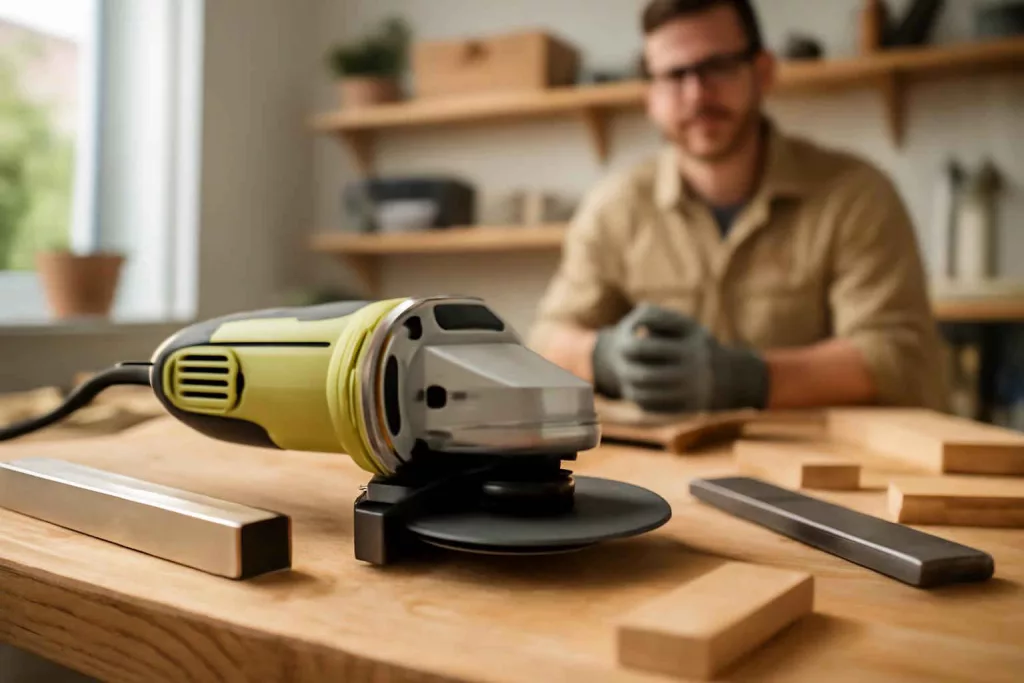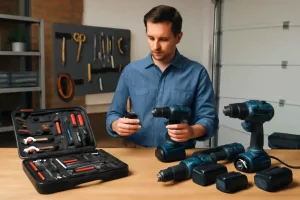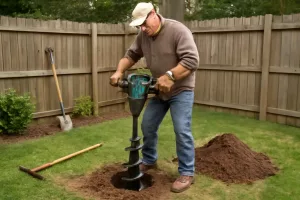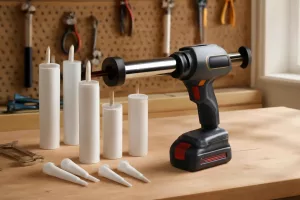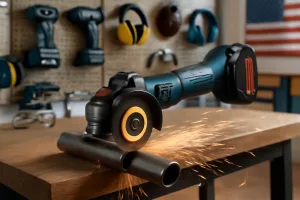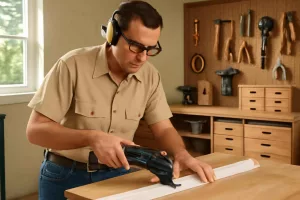When tackling DIY metal cutting, masonry work, or rust removal, excessive vibration from an angle grinder can lead to fatigue, imprecise cuts, and long-term hand and arm discomfort. Choosing the best low vibration angle grinders helps you maintain control, improve accuracy, and extend your comfort during longer projects. Whether you’re cutting rebar in a small garage or grinding welds on a backyard fence, a low-vibration model can transform your working experience and reduce strain.
If you’re ready to shop for a smoother, quieter grinding experience, explore the latest options here: Best Low Vibration Angle Grinders.
Why Vibration Matters in Angle Grinders
Understanding vibration’s impact starts with the physiology of your hands and arms. Prolonged exposure to vibration can cause numbness, tingling, and reduced grip strength, a condition known as hand-arm vibration syndrome (HAVS). For DIY enthusiasts and weekend warriors, lower vibration levels translate to greater comfort, reduced fatigue, and safer operation. More precise cuts also minimize material wastage and improve project outcomes.
Manufacturers reduce vibration by engineering counterweights, balanced rotors, and isolating handle designs. These innovations absorb and redirect energy away from your grip, so the tool feels steadier even at high speeds. Pay attention to the vibration rating expressed in meters per second squared (m/s²). Models rated below 5 m/s² are considered low vibration by industry standards and offer a noticeably smoother feel under load.
Beyond comfort, reduced vibration improves control when working on delicate or detailed tasks—such as tile cutting or smoothing weld seams. It also elevates safety: unpredictable tool movements due to excessive shake can lead to slips, kickbacks, or contacting the cutting disc with unintended surfaces. Investing in a low vibration angle grinder pays off in both performance and operator well-being, making it essential for frequent DIY work.
Common Applications for DIY Low Vibration Angle Grinders
Low vibration angle grinders excel across a range of home and workshop applications. Their reduced shake makes them ideal for cutting, grinding, and finishing tasks that demand precision and comfort. Some of the most popular DIY uses include:
- Metal Fabrication and Welding Prep: Smoothing weld beads, deburring edges, and cutting rebar or steel rods.
- Masonry and Tile Work: Scoring and cutting bricks, pavers, and ceramic tiles with minimal hand fatigue.
- Paint and Rust Removal: Using wire brush attachments to strip corrosion from car parts, garden tools, or outdoor furniture.
- Wood Carving and Sanding: Attaching flap discs or sanding pads for shaping wood and removing old paint from planks.
- Polishing and Finishing: Buffing metal surfaces to a mirror finish or smoothing concrete edges.
Choosing a low vibration angle grinder ensures you can handle extended DIY sessions without compromising on control or precision. Many homeowners discover that tasks seeming daunting with a standard grinder become enjoyable and even therapeutic with a cushioned, well-balanced tool.
How to Choose a Low Vibration Angle Grinder
Selecting the right low vibration model involves balancing power, size, and ergonomic design. Here are key factors to consider:
Power and Motor Type
Angle grinders typically range from 600 to 2,400 watts (corded) or 18 to 36 volts (cordless). Higher power ratings handle tougher materials but may add weight and complexity. For most home tasks, a 7- to 9-amp corded grinder or an 18- to 20-volt cordless model provides ample cutting speed while maintaining manageable size. Brushless motors run cooler, last longer, and generate less vibration than brushed variants.
Disc Size and Speed
Common disc diameters are 4½ inches and 5 inches for compact grinders, and 7 inches or larger for heavy-duty models. Smaller discs spin faster (up to 12,000 RPM), offering precision and reduced vibration. Larger wheels cut deeper but rotate more slowly, good for masonry or metal removal. Ensure the grinder supports variable speed to match the disc type and task.
Anti-Vibration Handles and Mounts
Ergonomic side handles with rubber padding absorb shock before it reaches your hands. Some models offer multiple handle positions for left- or right-handed use and adjustable angles to optimize control. Quick-adjust wheel guards can also reduce transmitted vibration by shielding your hand from reflected forces.
Weight and Balance
A well-balanced grinder feels lighter in the moment, even if its weight rating is on the higher side. Center-of-gravity design minimizes torque kickback, making the tool feel natural in your palm. Choose a model around 5 to 7 pounds for compact grinders and up to 10 pounds for high-power versions.
Safety and Dust Management
Look for models with mechanical or electronic anti-kickback clutches, which shut down the motor if the disc binds. Integrated dust ports connect to external collectors and dust extraction accessories to keep the workspace clear and reduce airborne particles. Clear guard designs improve visibility and positioning.
Top 5 Best Low Vibration Angle Grinders for DIY Projects
After evaluating power, vibration ratings, and user feedback, here are our top five picks for low vibration angle grinders suited to home workshops:
- Makita 9557PBX1 Angle Grinder
This 7-amp 4½-inch model features an anti-vibration handle, labyrinth construction to protect the motor, and a vibration rating of just 4.3 m/s². Weighing 4.5 pounds, it offers variable speed control and an ergonomic soft grip. Check price on Amazon. - DEWALT DWE4011 4½-Inch Paddle Switch Grinder
With a 7.5-amp motor, paddle on/off switch, and a comfortable body grip, this model minimizes vibration to 4.0 m/s². The quick-change wheel release lets you swap discs without a wrench. Ideal for precision tasks and general metalwork. Find it on Amazon. - Bosch GWS18V-45 18V Cordless Grinder
A brushless motor powers this 4½-inch cordless grinder at 8,500 RPM. The vibration-control side handle and one-finger guard allows 360-degree rotation. Rated at 3.8 m/s², it’s one of the lowest-vibration cordless options. See latest price. - Metabo WEV15-125 HT 5-Inch Professional Grinder
This high-torque model delivers 11,000 RPM with a vibration rating of 4.5 m/s². Its Anti-Vibration Side Handle (AVS) reduces fatigue, while the soft-start and restart protection features ensure safe operation. Well-balanced for tougher cutting jobs. Shop on Amazon. - Ryobi P421 18V One+ Cordless Grinder
Powered by an 18V battery, this 4½-inch grinder spins at 10,000 RPM. The D-shaped anti-vibration handle and tool-free guard adjustment simplify setup. With a vibration rating near 4.2 m/s², it’s an excellent option for tool-kit expansion. Buy on Amazon.
Each of these grinders pairs low vibration ratings with user-friendly features—making them top choices for DIYers seeking precision without fatigue.
Tips for Reducing Vibration and Extending Grinder Life
Even the best low vibration angle grinder benefits from proper handling and maintenance. Follow these tips to maximize comfort and performance:
- Use Vibration-Damping Gloves: Specially designed gloves absorb shock and protect hands from cold metal surfaces. They’re an inexpensive way to reduce fatigue on longer jobs.
- Attach Dust Extraction Accessories: Connect your grinder to dust extractors or Shop-Vac attachments to reduce airborne particles and prevent abrasive dust from wearing internal components.
- Rotate Grinding Discs: Switch between grinding and cutting discs to balance loading and reduce heat buildup. Warm discs can increase vibration and wear faster.
- Check and Tighten Fasteners: Periodically inspect handle mounts, wheel nuts, and guard clamps. Loose parts can amplify vibration and pose safety risks.
- Keep Vents Clean: Blocked air vents lead to overheating and increased internal vibration. Use compressed air or a small brush to clear debris after each use.
Regular lubrication of the gear mechanism, as outlined in your user manual, helps maintain smooth operation. Store your grinder in a dry place and avoid dropping it—impacts can misalign internal bearings and increase vibration over time.
Safety Precautions When Using Angle Grinders
Angle grinders are powerful tools requiring strict adherence to safety measures. Here’s how to protect yourself and those around you:
- Wear Proper PPE: Always use safety glasses or a full face shield, ear protection, and heavy-duty gloves. Consider a dust mask or respirator when cutting materials that generate fine particles.
- Secure Your Workpiece: Clamp or vice your material to prevent movement. Unstable surfaces increase the chance of disc binding and kickback.
- Position the Guard Correctly: Rotate the guard to deflect sparks and debris away from you. Never operate without the guard in place.
- Avoid Contact with Water: Use grinders only in dry environments to prevent electrical hazards. Keep cords and batteries clear of wet surfaces.
- Monitor Kickback: If the grinder suddenly jerks, release the switch immediately. Mechanical or electronic anti-kickback features on your model can cut power within milliseconds to minimize injury.
By combining a low vibration design with robust safety practices, you’ll achieve precise results while minimizing operational risks.
Conclusion
Upgrading to one of the best low vibration angle grinders can revolutionize your DIY projects by improving accuracy, comfort, and safety. Whether you opt for a corded powerhouse or a versatile cordless model, focus on motor quality, disc compatibility, ergonomic handles, and vibration ratings under 5 m/s². Maintaining your grinder with proper dust extraction, glove use, and routine checks extends lifespan and performance.
Ready to complete your home workshop toolkit? Compare the options above and find the perfect angle grinder for precise, low-fatigue operation. And don’t forget to explore other essential tools in our Power Tools section to build a comprehensive collection.
